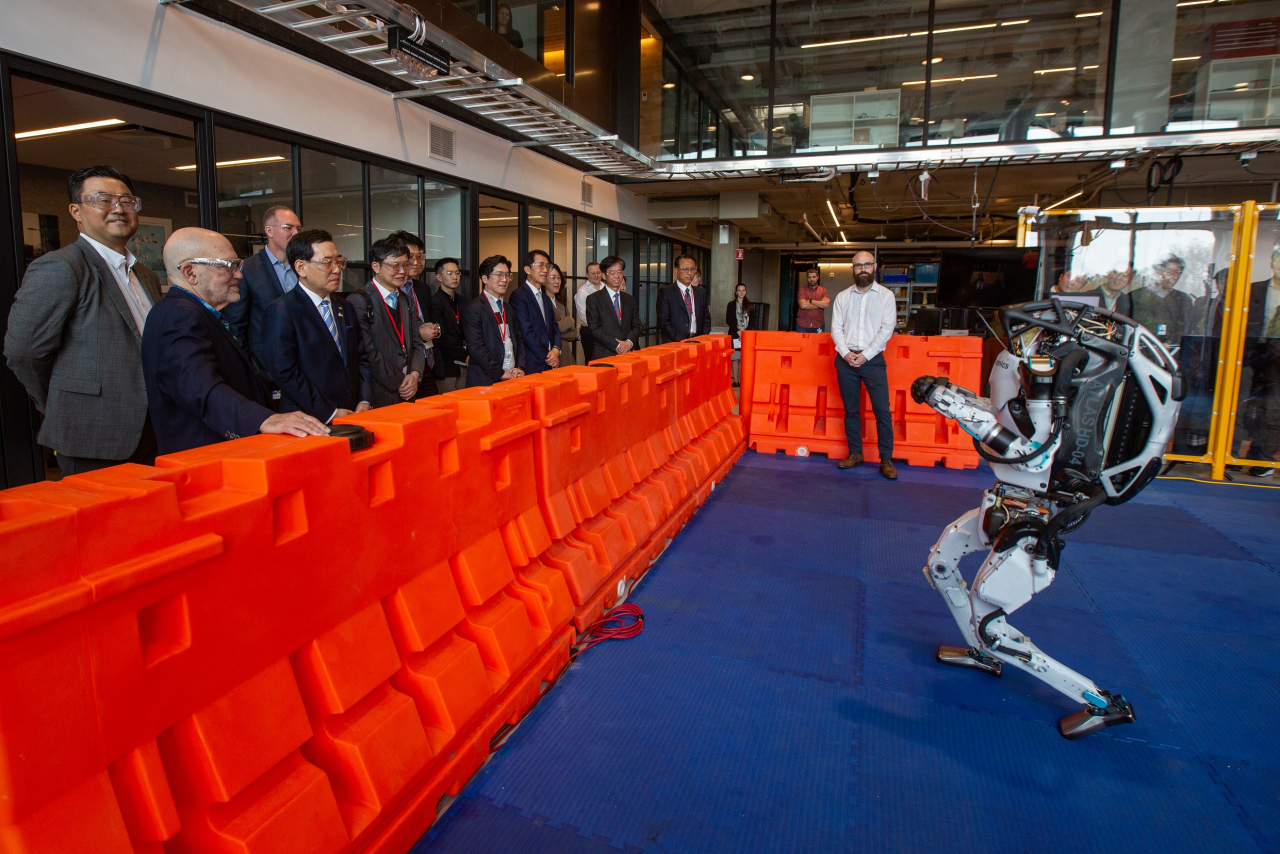Minister visits Boston Dynamics, Hyundai Motor’s robotics pioneer
Korea looks to unveil industrial strategy for advanced robotics by first half of the year
By Kan Hyeong-wooPublished : April 30, 2023 - 14:59

The South Korean government plans to unveil its industry strategy for advanced robots before the end of the first half of the year as the country looks to foster its robotics sector and competitiveness on the global stage, according to Trade Minister Lee Chang-yang.
“The Korean government will provide support for strengthening the competitiveness of cutting-edge robot companies, creating a new market and establishing global footholds,” said Lee during his visit to Boston Dynamics -- Hyundai Motor Group’s global robotics forefront -- in Waltham, Massachusetts, on Friday.
Lee was part of the South Korean delegation accompanying President Yoon Suk Yeol on his state visit to the United States last week to celebrate the 70th anniversary of the S. Korea-US alliance.
“I’m looking forward to the synergy created by the strategic partnership between Boston Dynamics, which has world-leading technology, and Hyundai Motor Group, which has excellent manufacturing capabilities,” Lee said.
He added that the government’s upcoming industry strategy for advanced robots will include plans to expand the level and scope of the robotics technology cooperation between Korea and the US.
The minister’s remarks resonated with the commitment of President Yoon and US President Joe Biden stated in the Washington Declaration that underscored the common direction to lead innovation in cutting-edge sectors beyond diplomacy and security.
Boston Dynamics’ officials demonstrated for Lee the operation of the company’s signature robots -- Spot, a four-legged walking robot capable of carrying out surveillance and exploration missions in extreme conditions; Atlas, a humanoid robot that can move like humans with its whole-body dynamic balancing technology and gripper; and Stretch, a flexible autonomous mobile robot that can carry 600 boxes weighing up to 23 kilograms per hour to make warehouse operations more efficient.
A Boston Dynamics official said, “The government’s long-term investment and support are extremely important for developing innovative robots and invigorating the industry. We hope for active support from the Korean government in regard to Hyundai Motor Group’s expansion plan of (the) robotics business.”
Hyundai Motor Group acquired Boston Dynamics in 2021 as the auto giant designated the robotics sector as one of the core businesses for future innovation. The company operates an independent robotics lab to develop industrial support robots, wearable robots for medical purposes and service robots. The company recently showcased its newly-developed automatic charging robot for electric vehicles at the 2023 Seoul Mobility Show, held from March 31 to April 9.
Hyundai Motor also pinned artificial intelligence as the pillar of future business, including robotics. The company set up the Boston Dynamics AI Institute last year to secure next-generation AI technology to better the movements and recognition functions of future robots.
According to the ministry’s projection, the global robot market, which is currently estimated at $28.2 billion, is expected to jump to $83.1 billion in 2030 with a compound annual growth rate of 13 percent.
The government decided in March to push for revising regulations in order to nurture the robotics industry as a future core growth engine for the country, unveiling a road map to figure out which restrictions need to be amended in the areas of expanding robots’ mobility, allowing robots in the safety industry, creating more collaborative and supportive robots, and establishing more robot-friendly infrastructure.



















![[Today’s K-pop] Treasure to publish magazine for debut anniversary](http://res.heraldm.com/phpwas/restmb_idxmake.php?idx=642&simg=/content/image/2024/07/26/20240726050551_0.jpg&u=)